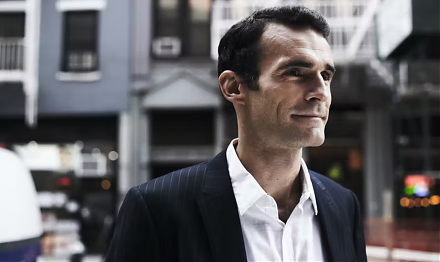

2020-05-14 12:35:00 Thu ET
technology data fifth discipline distinctive capabilities proprietary assets customer-centric metrics flywheel competitive advantages rare resources investments core competences core business operations reinvention disruptive innovation mergers acquisitions blue ocean sustainable profitability jobs-to-be-done principles clayton christensen
Disruptive innovators can better compete against luck by figuring out why customers hire products and services to accomplish jobs.
Clayton Christensen, Taddy Hall, Karen Dillon, and David Duncan (2016)
Competing against luck: the story of innovation and customer choice
Clayton Christensen and his co-authors advocate the new strategic management concept that it is important for senior business leaders to figure out why customers buy and hire products and services in order to accomplish specific jobs, tasks, and missions. These customers often need particular products and services to achieve progress in specific situations and contexts. Disruptive innovators should discover jobs that cannot be done with robust current solutions in the hyper-competitive red-ocean markets. In an important way, disruptive innovators should design solutions to allow customers to perform their jobs with simple, reliable, convenient, and cost-efficient products and services. The resultant disruptive innovations often develop new and less competitive blue-ocean markets.
Moreover, it is crucial for disruptive innovators to understand what most customers seek and need in the next decade. Beyond technical functions, features, and other inventive elements, customers further want enjoyable user experiences. Although lean enterprises organize their internal projects around business units, features, or geographic locations etc, these business structures often get in the way of giving customers ideal user experiences. Alternatively, lean enterprises should integrate their internal resources, processes, and values in order to optimize ideal consumer experiences across all business units, features, or geographic locations.
Overall, senior strategic managers must maintain their focus and emphasis on the jobs-to-be-done in due course. Unfortunately, many disruptive innovators shift their focus to user growth after these innovators launch and introduce new technological advances. At this stage, many companies inevitably lose sight of the fundamental reasons why most customers buy and hire their products and services to carry out specific jobs. Only when senior executive managers focus on the jobs-to-be-done through the lens of most target customers, middle managers and employees can make better day-to-day decisions that deliver desirable customer experiences.
The milk shake dilemma helps motivate the Christensen theory of jobs-to-be-done.
Many disruptive innovations fail at an early stage, and only a few succeed and take off. Striving to build successful disruptive innovations cannot depend on pure luck. Instead, lean independent business organizations can use the Christensen theory of jobs-to-be-done to discover the unmet needs of target customers for such better feasible solutions that these customers pay premium prices above intrinsic values.
Christensen developed this theory of jobs-to-be-done when he tried to help a major fast-food chain increase its milk shake sales. Most of the target customers looked for simple, convenient, and cost-effective milk shakes that would satisfy their thirst and hunger until lunch. Moreover, these milk shakes would be easy to consume in the car, would last for a few hours, and would leave hands dry and clean. Afternoon customers bought milk shakes for different jobs. For instance, many parents might buy milk shakes as liquid treats and snacks for their kids instead of buying toys for these kids. The Christensen theory of jobs-to-be-done offers fresh perspectives to help disruptive innovators understand the root causes of most customer behaviors. This landmark theory helps explain what motivates core customers to buy-and-hire products and services, not only over obvious alternative competitors, but also over different product and service categories. By understanding this causal mechanism, disruptive innovators can predict the likely rise and emergence of future successful products and services. In practice, most disruptive innovators should cater to these new customer needs and demands in advance.
The Christensen theory of jobs-to-be-done suggests the central theme that people bring new products and services to their daily lives. In particular, these customers hire most products and services to carry out specific jobs, tasks, and missions etc. These specific jobs represent the real tangible progress that most customers try to achieve under regular circumstances. As the milk shake buyers demonstrate, such circumstances matter and often involve fundamental factors around customer jobs, tasks, and missions. These factors shed fresh light on when most customers need new products and services; where these customers perform specific jobs; and why these customers plan to perform their jobs-to-be-done in due course.
These specific jobs, tasks, and missions can often be quite complex in addition to circumstances. These jobs exhibit many functional, social, and emotional elements. It is important for most disruptive innovators to pay particular attention to the social and emotional elements of both specific jobs and circumstances. In order to render new products and services ubiquitous, disruptive innovators must help customers perform specific jobs, tasks, and missions that have few or even no good solutions in the meantime. Disruptive innovators should regard these specific jobs and tasks as product and service discoveries over many years, decades, and even centuries. For instance, long-distance communication and transport are 2 good examples of essential customer needs; and the feasible solutions evolve and change over time (from snail mail and telegraph to telephone and email).
The Christensen theory of jobs-to-be-done offers fresh perspectives that empower companies to redefine how disruptive innovators incubate new business ventures. For example, small business owners need simple, reliable, convenient, and cost-effective computer software to manage their financial statements (balance sheets, income statements, and cash flow statements). The specific job of preparing these financial statements recurs from year to year. In response, Intuit provides the new business software solution QuickBooks with few technological advances and other inventive features. Because QuickBooks performs the specific job of preparing key financial statements for small business owners, these owners buy and hire the lean software solution. As a result, QuickBooks becomes widespread across America and can sell half the functionality at twice the price.
The Christensen theory of jobs-to-be-done can have profound practical relevance for lean and agile entrepreneurs and disruptive innovators worldwide.
To become successful inventors, disruptive innovators must seek out the right jobs to be done. There are at least 3 primary ways for disruptive innovators to navigate the uncharted territory of new blue-ocean markets. First, core disruptive innovators should analyze their own life-and-work experiences. These innovators should think about what many people want to achieve in simple, reliable, convenient, and cost-effective ways.
Second, disruptive innovators should look for non-consumption. These innovators should probe into both the social and emotional elements as well as the functional elements of some specific extant products and services. This fair assessment can help explain why customers cannot adopt specific extant products and services in the hyper-competitive red-ocean markets. Sometimes it is important for disruptive innovators to design products and services that help most target customers carry out jobs and tasks by fixing the unmet social and emotional needs.
Third, disruptive innovators should look for unusual uses of products and services. For instance, Arm & Hammer indicates that many people use its baking soda for a wide variety of jobs beyond its original purpose. This extension offers the company the opportunity to expand its product range to several categories from kitty litter to laundry detergent.
Conventional market research fixates on getting only a few data points from a large sample of people. In contrast, Christensen finds that gaining more data points from fewer people (or fewer focus groups) often turns out to be a better approach when core disruptive innovators look for specific jobs-to-be-done. The ultimate goal is to understand the jobs-to-be-done so well that these innovators can design bespoke solutions well beyond customer expectations. The resultant disruptive innovations cater to both the social and emotional elements of most products and services, so competitors cannot copy these solutions without understanding the non-functional elements of customer needs. Both the social and emotional elements can become major competitive advantages for disruptive innovators in new blue-ocean markets.
Most target customers encounter at least 2 internal forces when these customers hire new products and services to carry out specific jobs, tasks, and missions etc. These target customers may experience strong frustration with the extant solutions. At this stage, these target customers find alternative solutions attractive. From time to time, these novel products and services prove to be simple, reliable, convenient, and cost-effective for most target customers to hire to carry out specific jobs, tasks, and missions. Also, many consumers may stick with their current comfort and habit formation with the extant routine for specific job completion. Disruptive innovators should strive to overcome this customer fear by showcasing the positive functional, social, and emotional elements of new products and services. New customers can step outside their comfort zones to form new habits with both consumption and job completion.
Customers cannot always clearly articulate the key qualities and characteristics of desirable products and services for specific job completion and consumption. For this reason, disruptive innovators should conduct focus group interviews to identify the major drawbacks of extant solutions available on the market. This identification helps target customers better evaluate their current habits, lateral uses, and other trade-offs in order to perform the specific jobs-to-be-done. In brief, major disruptive innovators should seek to understand most jobs-to-be-done in the broader context of the core functional, social, and emotional elements of unmet consumer needs.
A good example of well-understood jobs-to-be-done is IKEA. Many consumers hire IKEA to furnish their houses nowadays. People pay premium prices for IKEA since these customers perform their jobs-to-be-done with fast delivery, simple assembly support, reliable furniture, convenience, and so forth. In this modern fashion, IKEA has become one of the major purpose brands worldwide. Purpose brands are often synonymous with the particular jobs-to-be-done for their target customers. Building a purpose brand is the ultimate competitive advantage (e.g. Amazon e-commerce, FedEx overnight delivery, Facebook social media, Google online keyword search, and Apple mobile communication etc). To maintain their current competitive moats and advantages, disruptive innovators continually connect their purpose brands to the specific jobs-to-be-done for most target customers.
Most disruptive innovators focus on the specific jobs-to-be-done for their key target customers, purpose brands, and ideal customer experiences.
Disruptive innovators should organize around the specific jobs-to-be-done for their core target customers. Also, these innovators should integrate these specific jobs-to-be-done and purpose brands across key business functions to ensure desirable user experiences. Core business values, processes, and resources must align well with most customer needs and demands for simple, reliable, convenient, and cost-effective products, services, solutions, and business insights. Most companies that understand the specific jobs-to-be-done for customers focus on many user benefits and experiences. This focus emphasizes product and service effectiveness rather than technical efficiency.
As disruptive innovators launch their new products and services, these companies tend to focus on user growth, lead generation, top-line revenue, and so on. At any rate, these disruptive innovators must remain near the specific jobs-to-be-done for most target customers. This proximity can empower disruptive innovators to build synonymous purpose brands in the long run.
However, several lean enterprises fall victim to 3 primary fallacies of business data. First, these lean enterprises must remain cognizant that datasets are a man-made abstraction of reality. It would be inappropriate for lean enterprises to evaluate new products, services, and blue-ocean markets on the basis of key metrics for hyper-competitive red-ocean markets and extant products and services. For longer-term survival and profitability, lean enterprises should design disruptive innovations with iterative continuous improvements on a regular basis. Near-term fixes, updates, or workarounds cannot suffice to offer simple, reliable, convenient, and cost-effective products, services, and solutions for specific jobs-to-be-done.
Second, lean enterprises can shift their attention from the extant products, services, and red-ocean markets to the novel disruptive innovations in less competitive blue-ocean markets. This structural shift should help with ubiquitous acceptance among early technology adopters. This structural shift should further offer lean enterprises the opportunity to invest bottom-line cash flows in sharpening the saw for key jobs-to-be-done for target customers. As a result, this virtuous cycle can grow over time.
Third, lean enterprises should remember the fact that data can support almost any viewpoint. Triangulation requires different fundamental perspectives, focus groups, and subject matter experts and non-experts of diverse backgrounds. This diversity helps lean enterprises incubate the next disruptive innovations without losing sight of the specific jobs-to-be-done for most target customers.
When all senior leaders, middle managers, and other team members understand the specific jobs-to-be-done for most target customers, these decision-makers and individual contributors can better perform their own day-to-day tasks, assignments, and responsibilities. Middle managers and most other team members make better decisions on the basis of sound business acumen. As a consequence, this healthy teamwork can recur with neither external interference nor micromanagement. Also, these team members spend less time evaluating alternative options because these middle managers and individual contributors understand what causes their primary solutions to accomplish the specific jobs-to-be-done for most target customers. In effect, senior decision-makers can thus devote fewer resources and processes to developing unnecessary features. In any case, corporate decision-makers should not shift focus from the specific jobs-to-be-done for most target customers to meet shareholder return expectations.
This analytic essay cannot constitute any form of financial advice, analyst opinion, recommendation, or endorsement. We refrain from engaging in financial advisory services, and we seek to offer our analytic insights into the latest economic trends, stock market topics, investment memes, personal finance tools, and other self-help inspirations. Our proprietary alpha investment algorithmic system helps enrich our AYA fintech network platform as a new social community for stock market investors: https://ayafintech.network.
We share and circulate these informative posts and essays with hyperlinks through our blogs, podcasts, emails, social media channels, and patent specifications. Our goal is to help promote better financial literacy, inclusion, and freedom of the global general public. While we make a conscious effort to optimize our global reach, this optimization retains our current focus on the American stock market.
This free ebook, AYA Analytica, shares new economic insights, investment memes, and stock portfolio strategies through both blog posts and patent specifications on our AYA fintech network platform. AYA fintech network platform is every investor's social toolkit for profitable investment management. We can help empower stock market investors through technology, education, and social integration.
We hope you enjoy the substantive content of this essay! AYA!
Andy Yeh
Chief Financial Architect (CFA) and Financial Risk Manager (FRM)
Brass Ring International Density Enterprise (BRIDE) © 2013-2023
Do you find it difficult to beat the long-term average 11% stock market return?
It took us 20+ years to design a new profitable algorithmic asset investment model and its attendant proprietary software technology with fintech patent protection in 2+ years. AYA fintech network platform serves as everyone's first aid for his or her personal stock investment portfolio. Our proprietary software technology allows each investor to leverage fintech intelligence and information without exorbitant time commitment. Our dynamic conditional alpha analysis boosts the typical win rate from 70% to 90%+.
Our new alpha model empowers members to be a wiser stock market investor with profitable alpha signals! The proprietary quantitative analysis applies the collective wisdom of Warren Buffett, George Soros, Carl Icahn, Mark Cuban, Tony Robbins, and Nobel Laureates in finance such as Robert Engle, Eugene Fama, Lars Hansen, Robert Lucas, Robert Merton, Edward Prescott, Thomas Sargent, William Sharpe, Robert Shiller, and Christopher Sims.
Follow AYA Analytica financial health memo (FHM) podcast channel on YouTube: https://www.youtube.com/channel/UCvntmnacYyCmVyQ-c_qjyyQ
Follow our Brass Ring Facebook to learn more about the latest financial news and fantastic stock investment ideas: http://www.facebook.com/brassring2013.
Free signup for stock signals: https://ayafintech.network
Mission on profitable signals: https://ayafintech.network/mission.php
Model technical descriptions: https://ayafintech.network/model.php
Blog on stock alpha signals: https://ayafintech.network/blog.php
Freemium base pricing plans: https://ayafintech.network/freemium.php
Signup for periodic updates: https://ayafintech.network/signup.php
Login for freemium benefits: https://ayafintech.network/login.php
If any of our AYA Analytica financial health memos (FHM), blog posts, ebooks, newsletters, and notifications etc, or any other form of online content curation, involves potential copyright concerns, please feel free to contact us at service@ayafintech.network so that we can remove relevant content in response to any such request within a reasonable time frame.
2023-10-07 10:24:00 Saturday ET

Thomas Philippon draws attention to greater antitrust scrutiny in light of the rise of market power and its economic ripple effects. Thomas Philippon (20
2023-07-07 10:29:00 Friday ET

Louis Kaplow strives to find a delicate balance between efficiency gains and redistributive taxes in the social welfare function. Louis Kaplow (2010)
2018-05-01 11:38:00 Tuesday ET

America and China play the game of chicken over trade and technology, whereas, most market observers and economic media commentators hope the Trump team to
2019-06-07 04:02:05 Friday ET

The world seeks to reduce medicine prices and other health care costs to better regulate big pharma. Nowadays the Trump administration requires pharmaceutic
2019-03-31 11:40:00 Sunday ET

AYA Analytica free finbuzz podcast channel on YouTube March 2019 In this podcast, we discuss several topical issues as of March 2019: (1) Sargent-Wallac
2019-09-17 08:33:00 Tuesday ET

Global stock market investors foresee the harbinger of a major economic downturn. Many stock market investors become anxious due to negative term spreads an